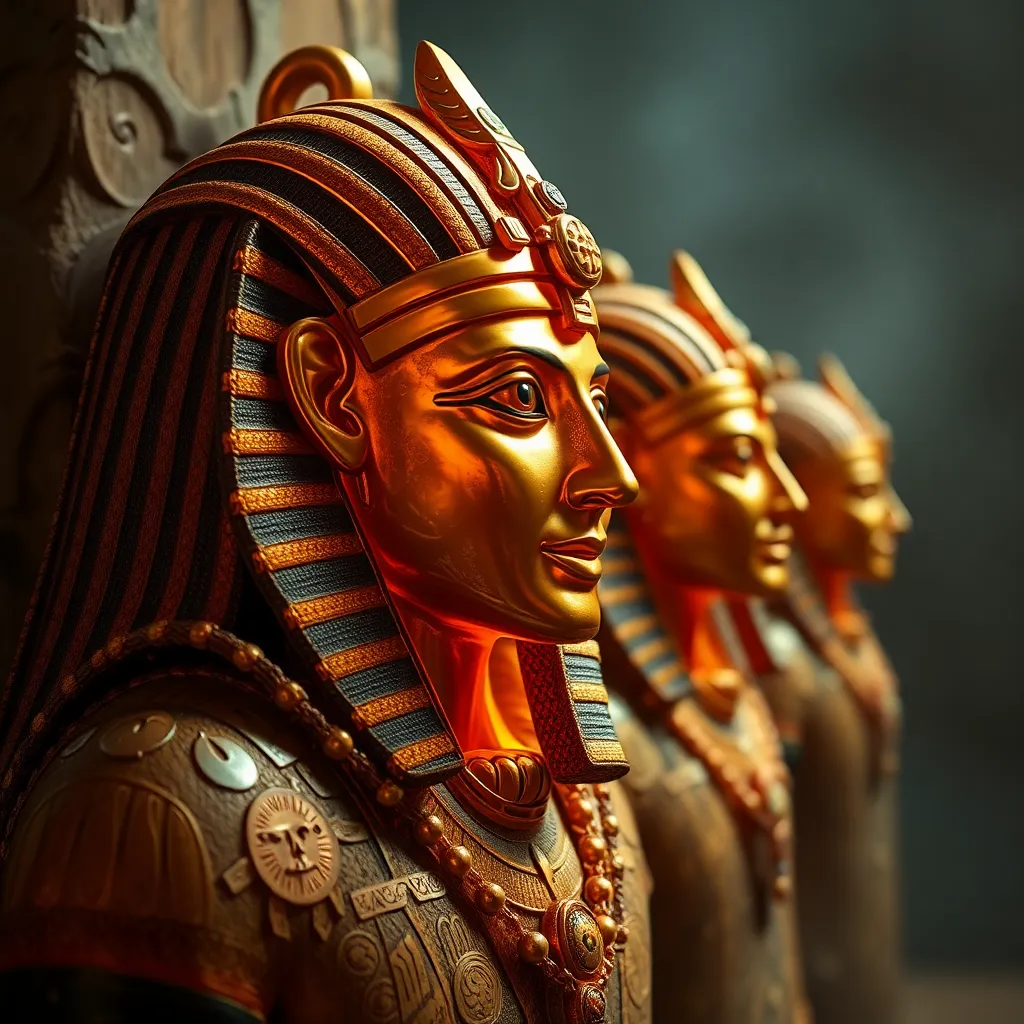The Role of Amulets in Egyptian Festivals and Celebrations
I. Introduction
Ancient Egyptian beliefs were deeply intertwined with the spiritual and physical worlds, where the divine was omnipresent, influencing every aspect of life. Festivals and celebrations played a crucial role in Egyptian culture, serving as moments of communal joy, religious observance, and connection to the gods. One of the most fascinating aspects of these cultural practices was the use of amulets—objects believed to hold protective and magical properties.
II. Historical Context of Amulets in Ancient Egypt
The origins of amulets in ancient Egypt can be traced back to the earliest dynasties, evolving in design and purpose through the centuries. These small objects, often carried or worn, were crafted from various materials including:
- Stone (such as lapis lazuli and turquoise)
- Metal (like gold and silver)
- Wood
- Clay
Common symbols adorned these amulets, each imbued with specific meanings. For instance, the ankh symbolized life, while the scarab beetle represented rebirth and transformation. Over different periods in Egyptian history, the popularity and styles of amulets evolved, reflecting changing beliefs and artistic trends.
III. Significance of Amulets in Religious Practices
Amulets held a profound connection between the wearer and the divine. They were not only personal talismans but also integral to religious rituals and offerings during festivals. For example:
- Amulets dedicated to Isis were believed to provide protection during childbirth.
- Those associated with Osiris symbolized resurrection and were often used in funerary contexts.
During festivals, priests and worshippers utilized amulets in rituals, believing that these objects could channel divine energies and blessings, enhancing the connection to the gods.
IV. Amulets and Protection during Celebrations
The ancient Egyptians held firm beliefs regarding protection from evil spirits and misfortune, particularly during festive occasions. Major celebrations, such as Wepet-Renpet (the Egyptian New Year), were times of heightened spiritual activity. During these events:
- Individuals often wore personal amulets to safeguard against negative influences.
- Communal amulets were created for public gatherings, uniting communities in shared protection.
This dual approach to amulets—personal versus communal—highlighted the importance of both individual and collective spiritual safety during celebrations.
V. Amulets in Symbolism and Rituals of Major Festivals
Various key festivals in ancient Egypt were associated with specific amulets that reflected their themes and rituals. Notable examples include:
- Opet Festival: Celebrated the rejuvenation of the pharaoh and included amulets symbolizing fertility and prosperity.
- Sed Festival: Marked the renewal of a king’s reign, with amulets representing strength and vitality.
During these festivals, specific rituals incorporated the use of amulets, which were believed to invoke divine favor. The colors and shapes of the amulets also held significance; for example, blue and green often represented life and regeneration, while red symbolized protection against chaos.
VI. The Role of Amulets in Mourning and Commemoration
In addition to their protective qualities during celebrations, amulets played a vital role in funerary rites. They were placed on or near the deceased as tokens of protection in the afterlife. Key points include:
- Amulets such as the Eye of Horus were believed to provide safe passage through the underworld.
- Festivals commemorating the dead, like the Khoiak, involved rituals where amulets were integral to honoring and remembering the deceased.
The connection between life, death, and rebirth was central to Egyptian beliefs, and amulets served as a bridge between these realms, reinforcing the cyclical nature of existence.
VII. Modern Interpretations and Legacy of Amulets
The influence of ancient Egyptian amulets persists in contemporary practices, with many people turning to similar objects for spiritual guidance and protection today. Noteworthy aspects include:
- The resurgence of interest in amulets within modern spirituality and wellness communities.
- Archaeological studies revealing insights into the cultural and spiritual significance of these artifacts.
As researchers continue to uncover the mysteries of ancient Egyptian amulets, their legacy endures, highlighting the timeless human desire for protection, meaning, and connection to the divine.
VIII. Conclusion
The multifaceted role of amulets in Egyptian festivals and celebrations underscores their cultural and spiritual significance. From personal protection to communal rituals, these objects served as vital links between the physical and spiritual worlds. As we reflect on the enduring legacy of ancient Egyptian traditions, we recognize that the symbolism and purpose of amulets continue to resonate in modern spirituality, reminding us of the rich tapestry of beliefs that shaped one of history’s most fascinating civilizations.




